SelgasCano And Andreu Carulla Convert Industrial Mechanical Workshop Into A Restaurant In Madrid
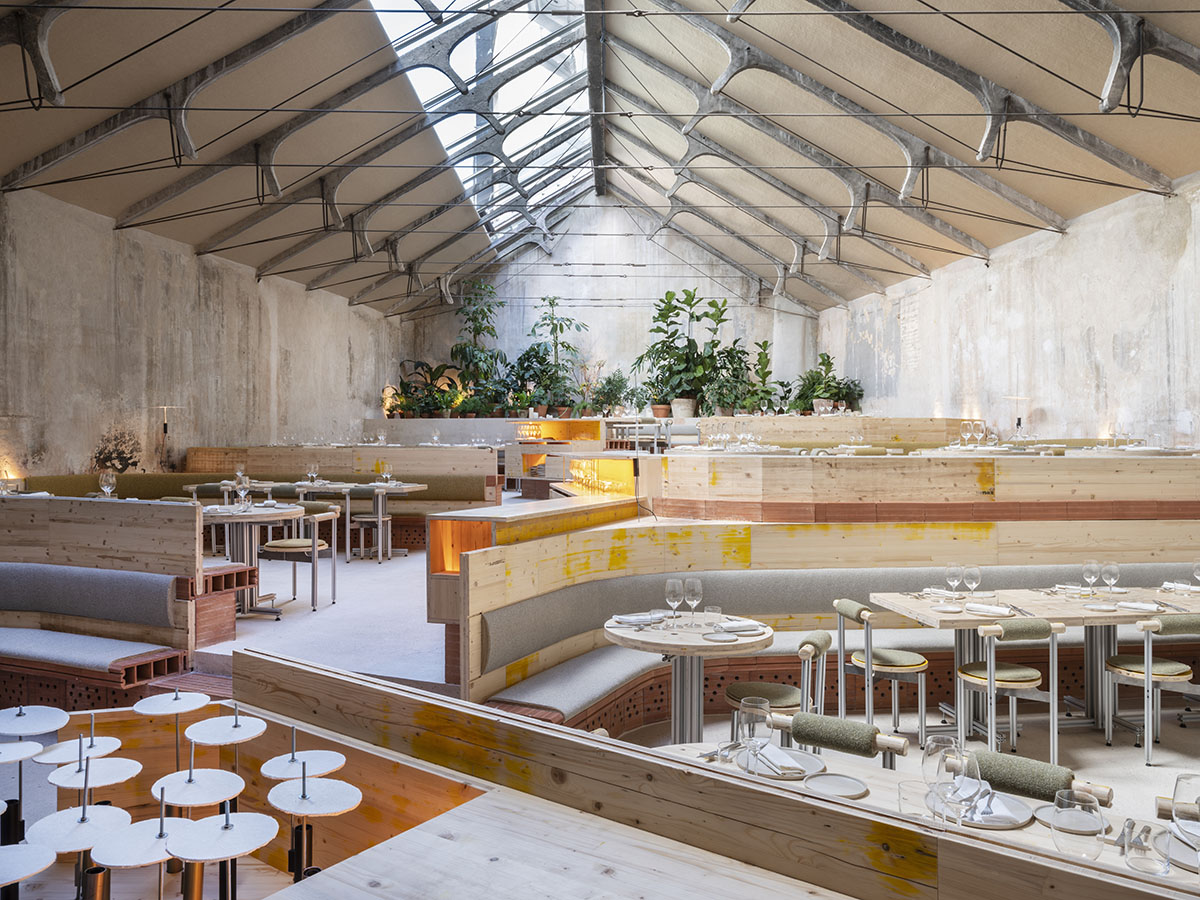
Spanish architecture practice SelgasCano and Andreu Carulla have converted an industrial mechanical workshop into a restaurant in Madrid, Spain.
Named Tramo, the 410-square-metre space is carrying the traces of the past with its remarkable original feature. It is covered by a beautiful roof structure made of slender concrete and steel cable trusses.
The restaurant has different pieces merging the old with the new one, which was semi-prefabricated on the ground, but finished and tensioned in situ.
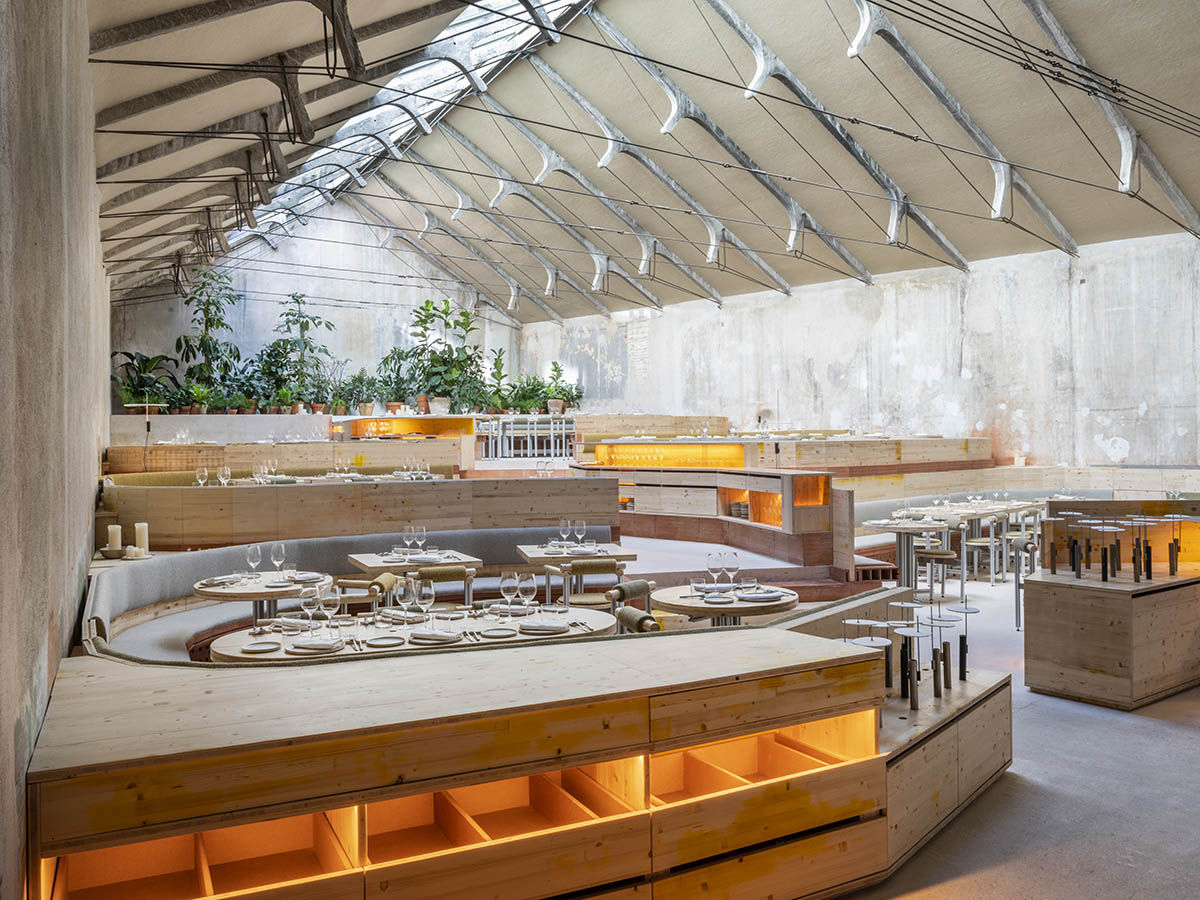
According to SelgasCano, the interior sapce is "working with what exists, and avoiding the superfluous."
Previously used as a mechanical workshop and small bar, called Garaje Hermético, it was an icon of the Madrid nightlife scene. The original structure was initially constructed as a warehouse in the early 1950s.

"The main objective of architecture is simply to keep that structure intact and enhance it by preserving its simplicity and beauty," said SelgasCano.
"To do this, all the air conditioning is brought under the continuous benches that are formed by the ceramic ducts themselves, letting the air out through irregularly opened holes under the diners as a plenum."
Respecting to the historical references of the warehouse, the studio has applied limited modifications and introduced new elements as much as possible to keep them from predominating over the old structure.

In this way, the original essence of the place would be preserved. The space is laid out in different levels, which creates distinct ambiences and points of view, with the kitchen acting as the visual center and also generating the space.
"To maintain the character of the main space of the nave without the table spaces becoming too scaled and cold, it was proposed to establish two orders: on the one hand the existing one of the container, with an orthogonal geometry," said the office.
"On the other hand, the new content, designing it more organically and with different levels, is creating a certain disorder that can generate different situations, environments and points of view."
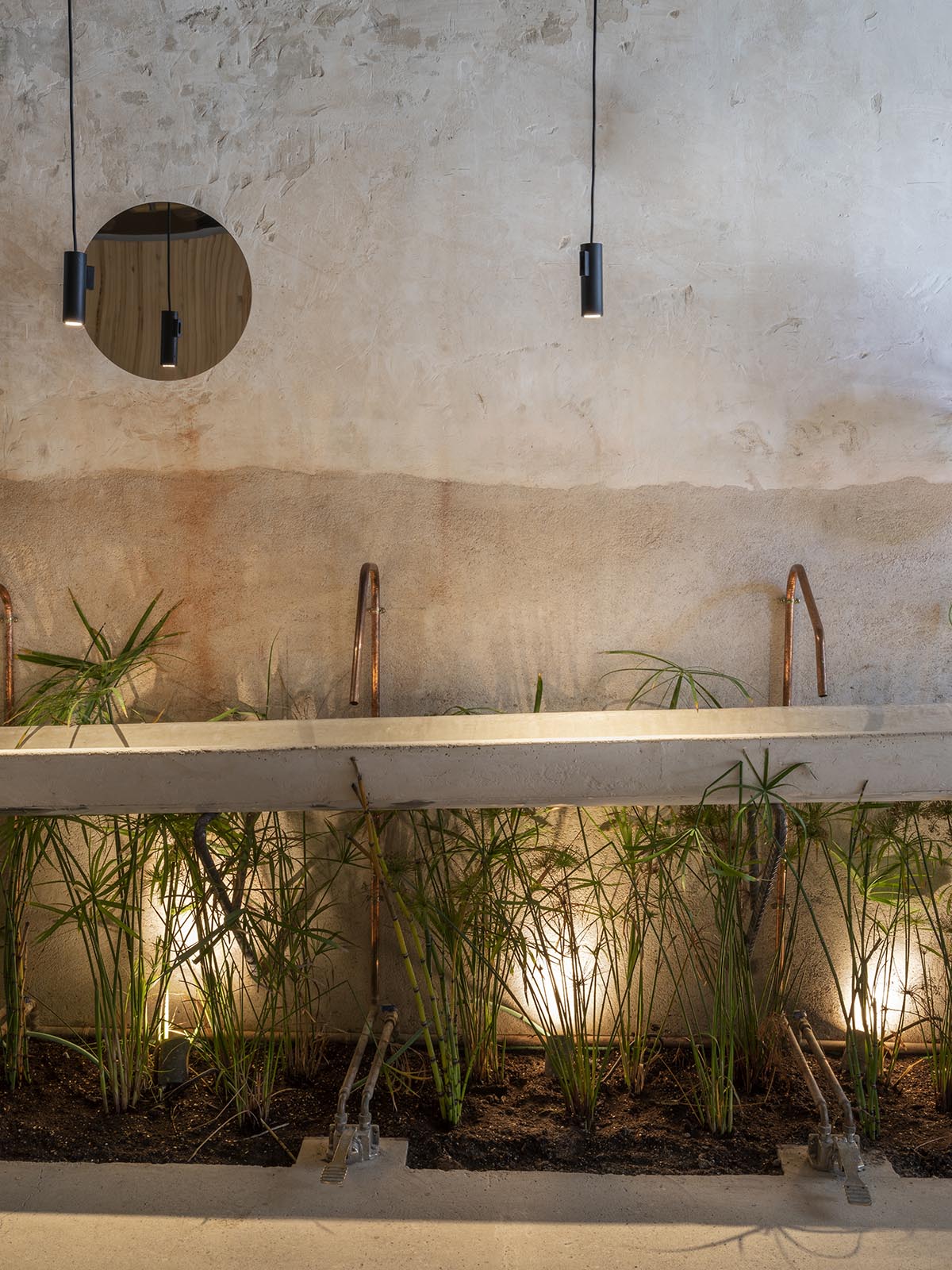
From all these levels guests are able to see and enjoy heart of the space - the kitchen, which is located in the lowest part of that amphitheater.
"A north orientation opens a large skylight on the roof that allows the entry of natural light and the view of the garden that has been created above, barely visible from the interior but very visible from the homes that surround the nave," the studio explained.
The studio also created a small garden in the side patio to which the only possible window opens on one of the sides of the nave.
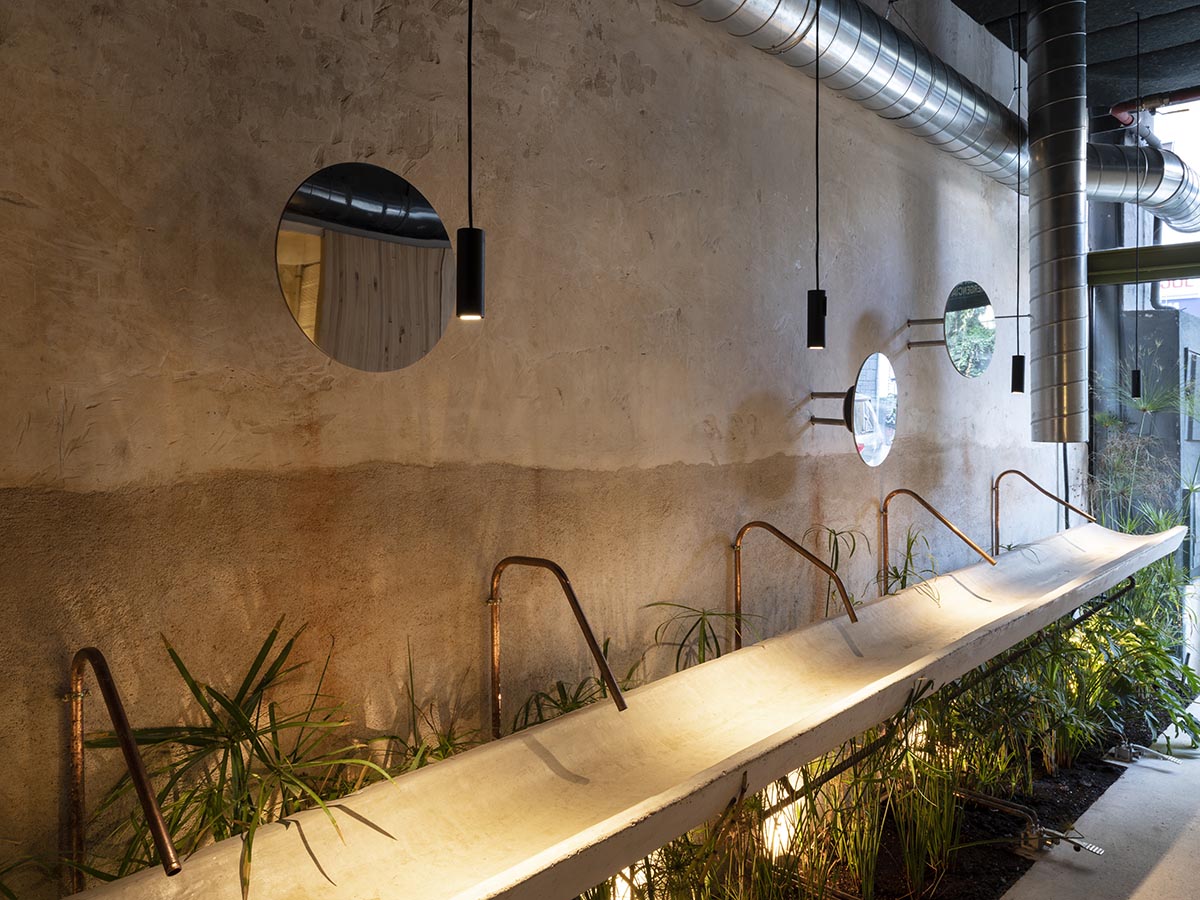
The main access is provided as it was done in the past by car, using the old ramp entrance to the mechanical garage, passing through the open and exposed kitchen, and leaving on the other side of it the other emergency exit that goes through the bathrooms and uses the old one. Hermetic garage entrance.
In the project, environmental impacts were taken into consideration and the origin of all materials was controlled. Existing materials were reused and toxic elements were removed.
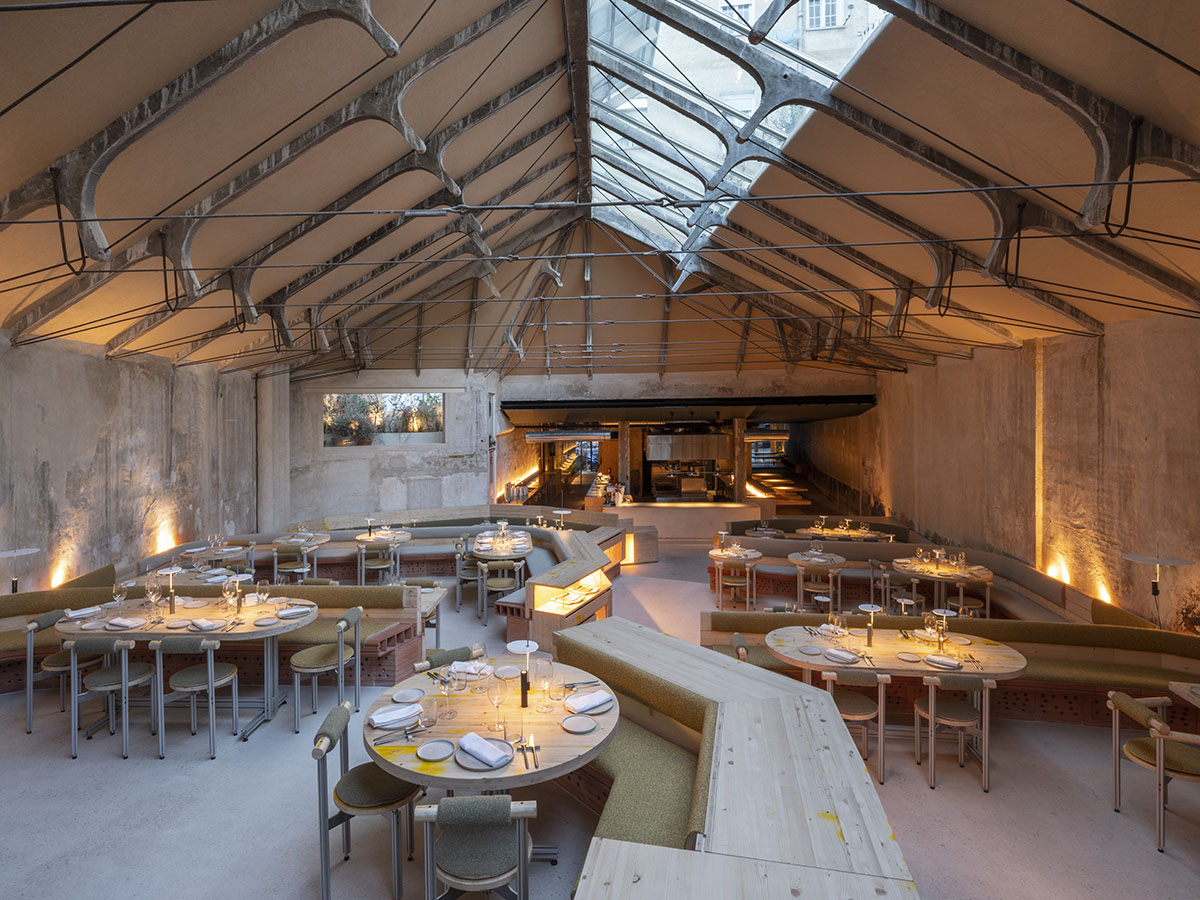
"We have had a special concern with acoustic and lighting comfort," the office said. "For this reason, a panel composed of recycled and pressed textiles (GeoPannel) has been installed on all ceilings, which is not only acoustically absorbent, it is also a thermal insulator that gives the space greater comfort."
For lighting the team has employed indirect lights that illuminate the surface of the materials, highlighting all their qualities and creating a comfortable and warm atmosphere.
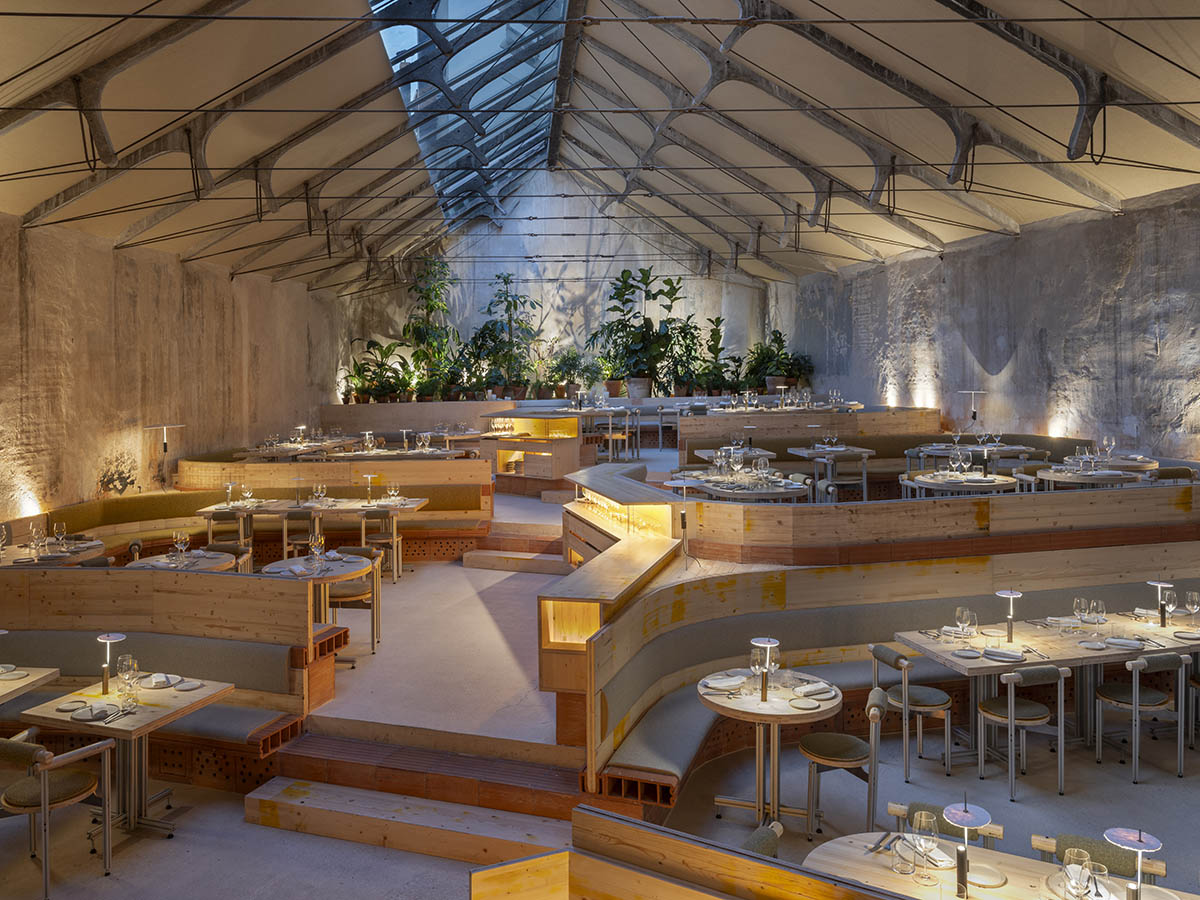
Seeking energy self-sufficiency, the project has portable table lamps that are charged during the day by solar panels, which are located on the roof, bringing light to the table at night.
A cistern is installed for the reuse of rainwater and the sink, designed in such a way that it leads all the water to a tank where it is filtered and purified for subsequent use in irrigation and cisterns.
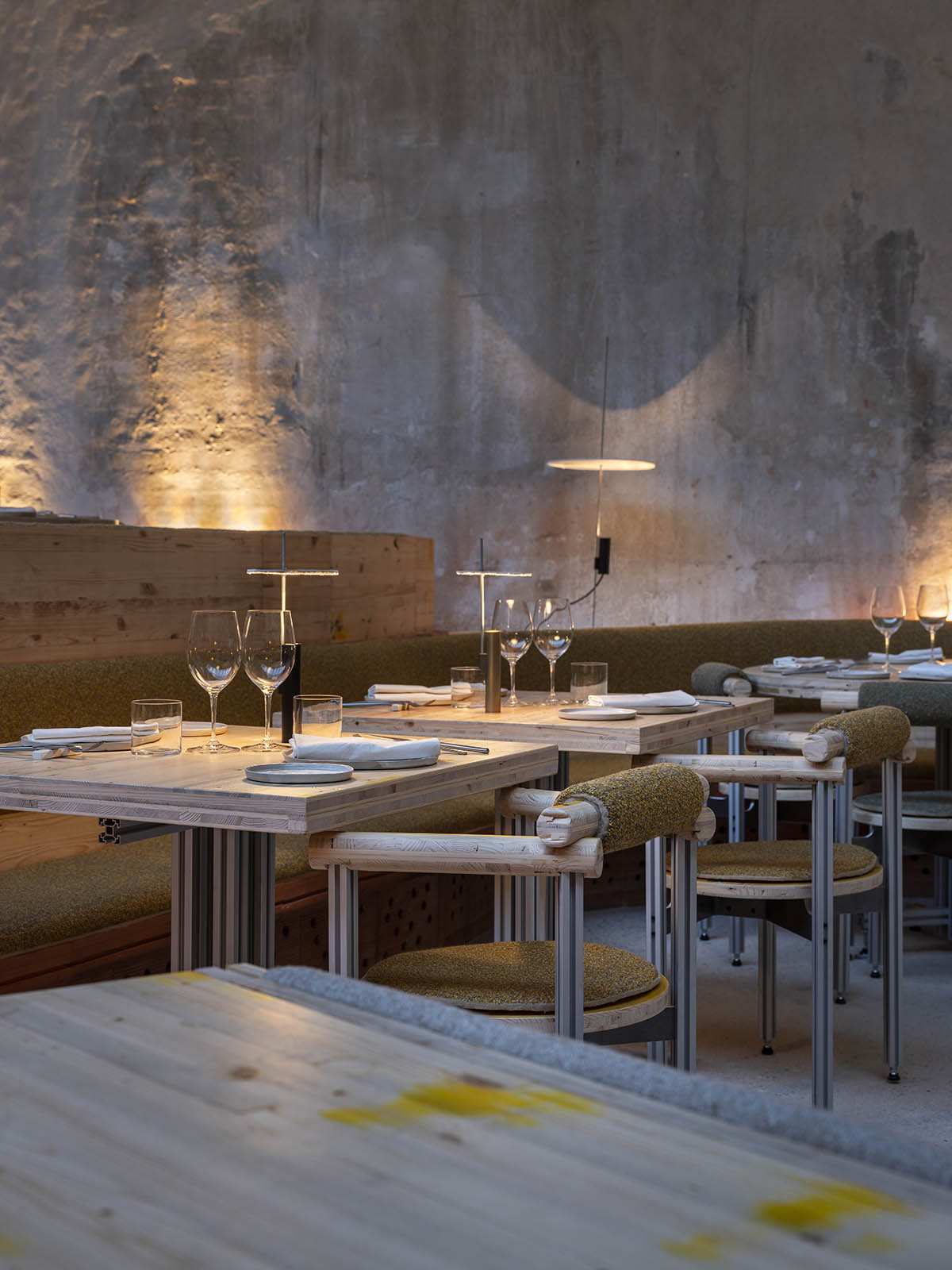
Catalan-born designer Andreu Carulla has created furniture and lighting fixtures. The space is shaped around sensitivity, craftsmanship, and deliberate austerity, with modularity as the constructive through-line in all the elements.
Beneath the seating benches there is a system made of over 1,000 ceramic modules that are made by craftsman. They form part of a natural heating and cooling system based on Provençal wells, integrated into the space through a series of continuous benches.

Fabrics for the lamps were made of reclaimed textiles designed by Andreu Carulla. They were made with sections of threaded rod reclaimed from construction on the venue, which are normally used in false ceilings.
The light emitted by a customized LED module bounces off the surface of a paper disk with an irregular surface, providing a uniformly dim, gentle, and intimate light.
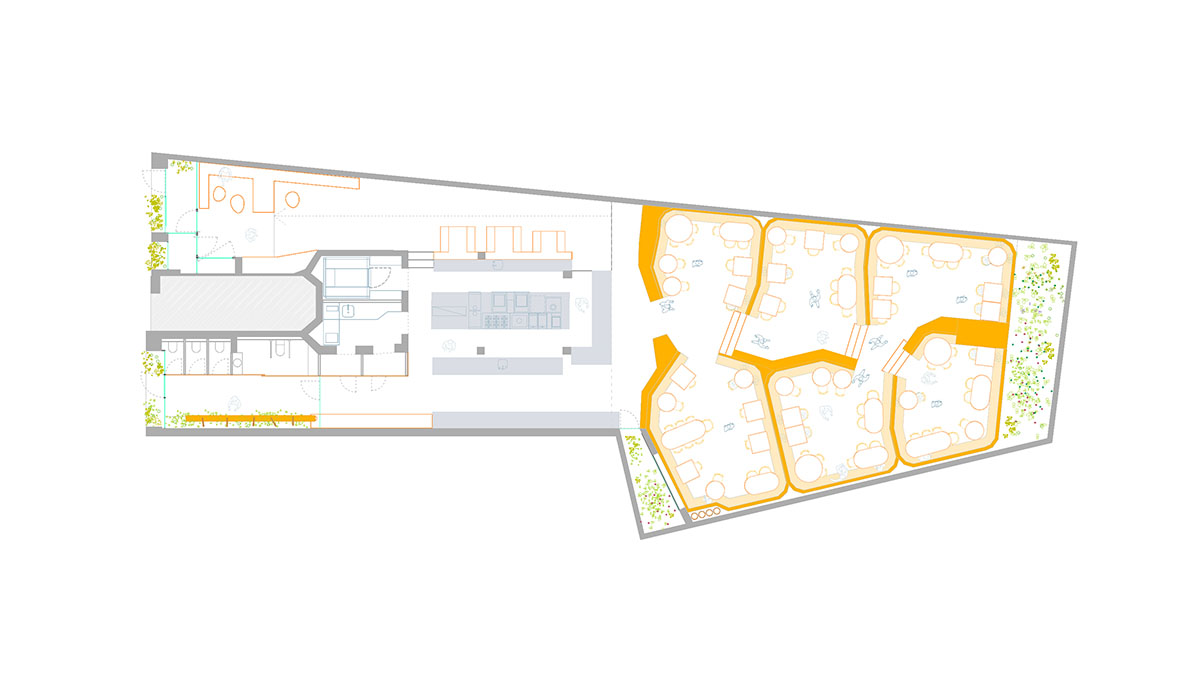
Floor plan
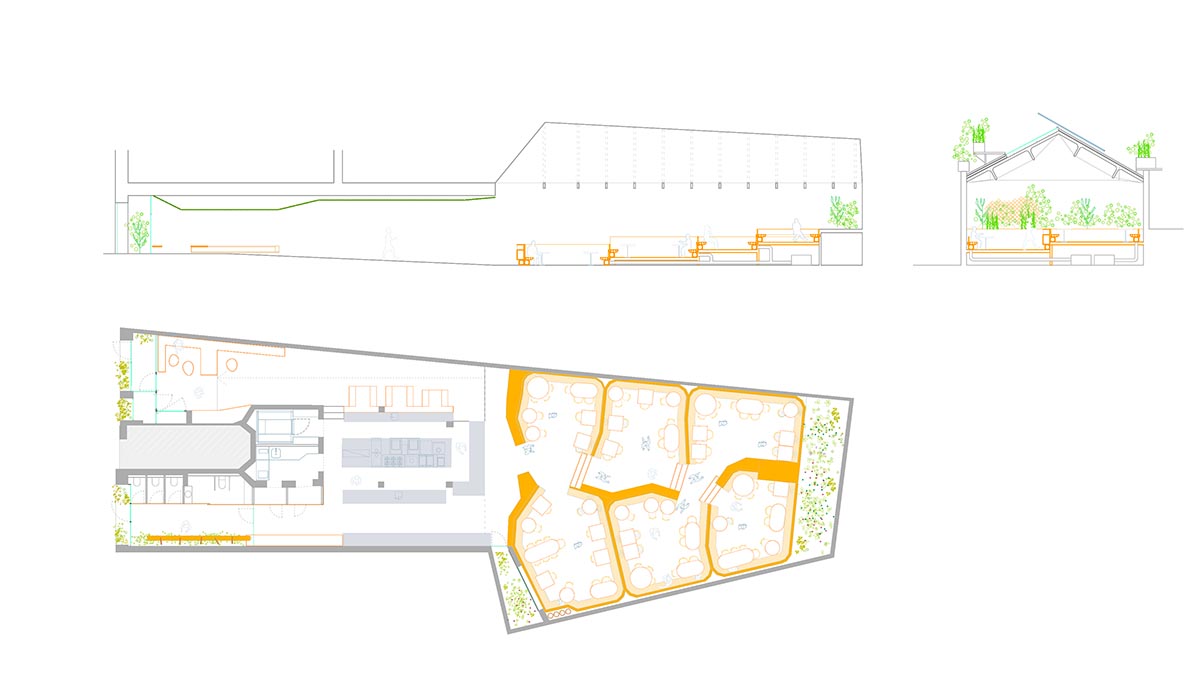
Plans and section
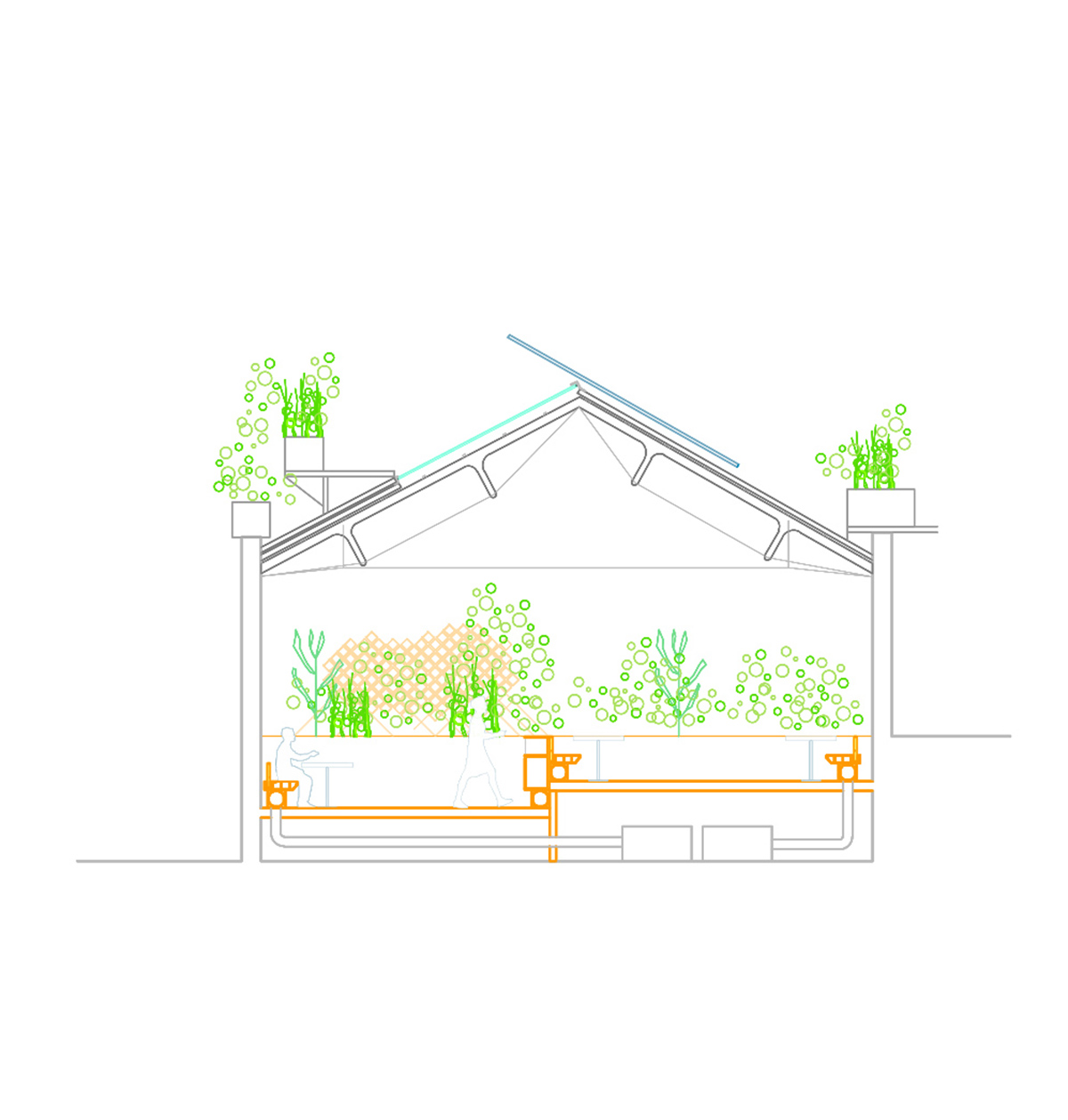
Cross-section
SelgasCano created a bulbous-formed food market with transparent ETFE membrane at Design District in London, United Kingdom. Another key project of the studio is Second Home's Hollywood campus featuring yellow working pods with 6,500 trees and plants on a former car park.
Project facts
Project name: Tramo
Architects: SelgasCano, Andreu Carulla
Location: Eugenio Salazar, 56. Madrid, Spain
Date: 2022-2023
Collabotators: Inés Olavarrieta, Albert Sararols
Client: Proyectos Conscientes
General contractor: Zimenta
Total floor area: 410m2
All images © Juan Baraja.
All drawings © SelgasCano.
> via SelgasCano
Andreu Carulla bar hospitality interiors Madrid restaurant SelgasCano
